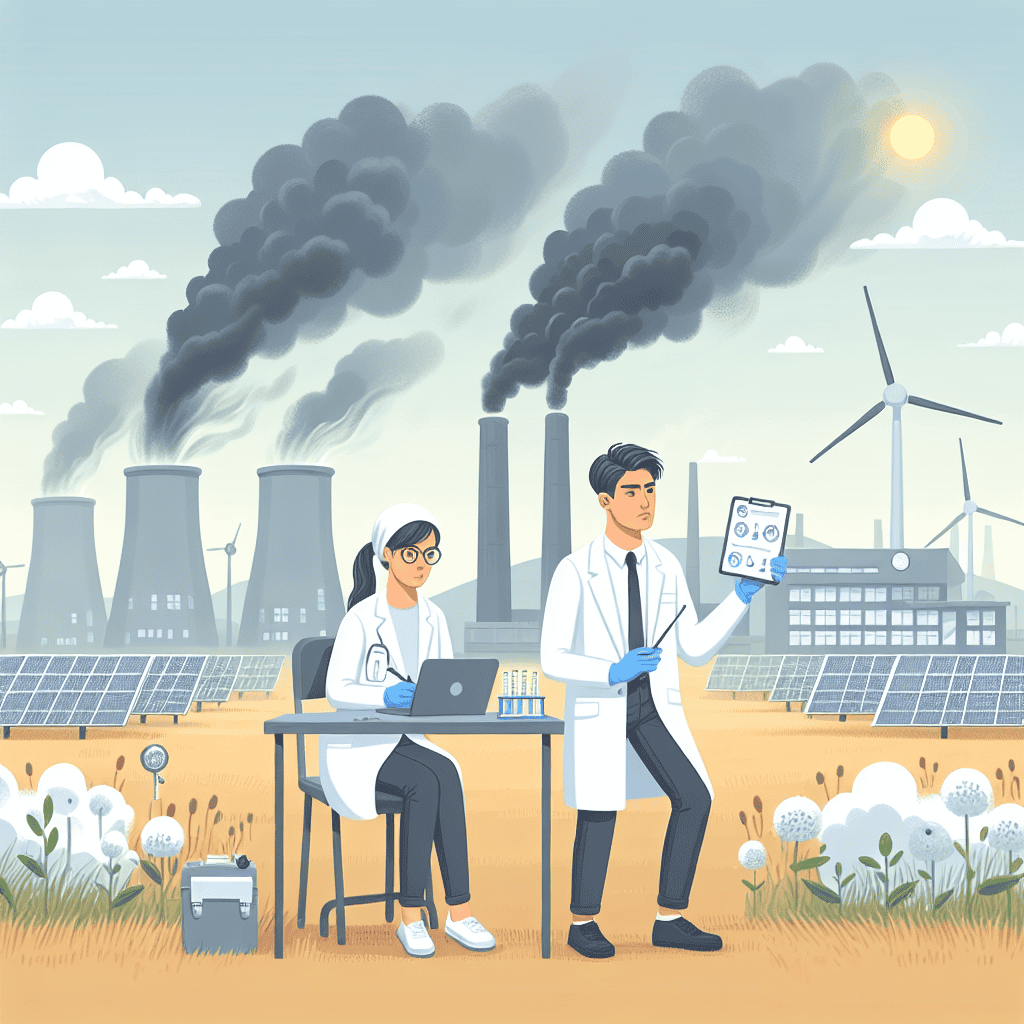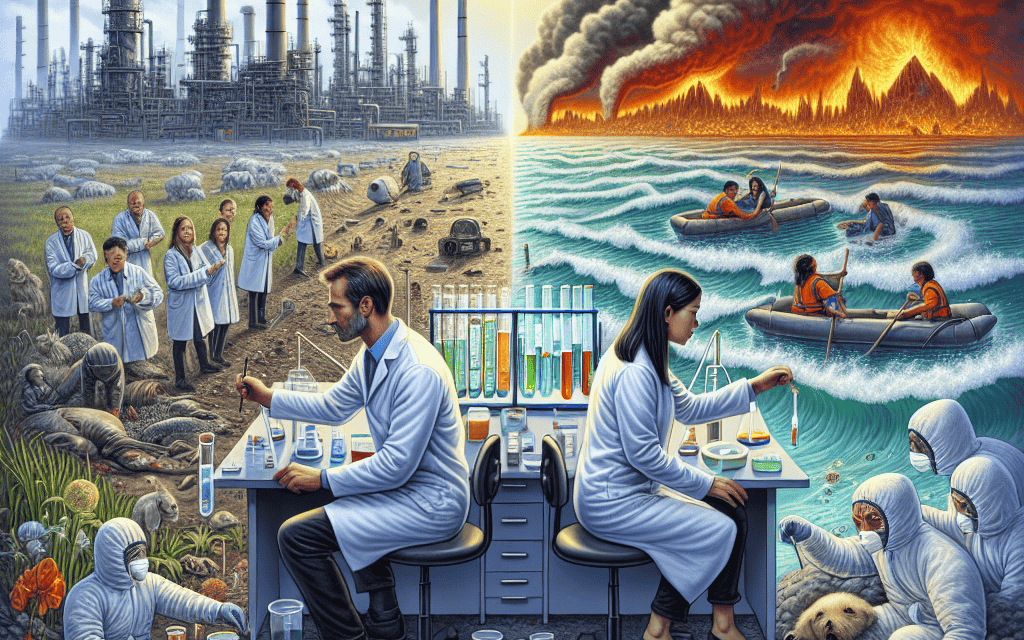-
Table of Contents
- Environmental Health: Addressing Pollution and Climate Change Effects
- Understanding Pollution: Types and Sources
- Air Pollution
- Water Pollution
- Soil Pollution
- Noise Pollution
- Plastic Pollution
- Climate Change: Causes and Consequences
- Greenhouse Gas Emissions
- Rising Temperatures and Heatwaves
- Extreme Weather Events
Environmental Health: Addressing Pollution and Climate Change Effects

Environmental health is a critical aspect of public health that focuses on the interactions between people and their environment. It encompasses the assessment and control of environmental factors that can potentially affect health. Two of the most pressing issues in environmental health today are pollution and climate change. These phenomena not only threaten ecosystems but also have profound impacts on human health and well-being. This article delves into the multifaceted relationship between environmental health, pollution, and climate change, exploring their effects and the strategies to mitigate them.
Understanding Pollution: Types and Sources
Pollution is the introduction of harmful substances or products into the environment, leading to adverse effects on living organisms and the ecosystem. It is a significant environmental health issue that manifests in various forms, each with distinct sources and impacts.
Air Pollution
Air pollution is one of the most pervasive forms of pollution, characterized by the presence of harmful substances in the atmosphere. These pollutants can be natural, such as volcanic ash, or anthropogenic, such as emissions from vehicles and industrial processes.
Key air pollutants include particulate matter (PM), nitrogen oxides (NOx), sulfur dioxide (SO2), carbon monoxide (CO), and volatile organic compounds (VOCs). These pollutants can cause respiratory diseases, cardiovascular problems, and even cancer. For instance, the World Health Organization (WHO) estimates that air pollution is responsible for approximately 7 million premature deaths annually.
Case studies, such as the Great Smog of London in 1952, highlight the severe health impacts of air pollution. During this event, a combination of cold weather, windless conditions, and air pollution from coal burning led to a thick smog that caused thousands of deaths and respiratory illnesses.
Water Pollution
Water pollution occurs when harmful substances contaminate water bodies, making them unsafe for human use and aquatic life. Common sources include industrial discharges, agricultural runoff, and untreated sewage.
Pollutants such as heavy metals, pesticides, and pathogens can lead to diseases like cholera, dysentery, and hepatitis. The Flint water crisis in Michigan, USA, is a stark example of water pollution’s impact on public health. In 2014, the city’s water supply was contaminated with lead, exposing thousands of residents to toxic levels of the metal.
Efforts to combat water pollution include stricter regulations on industrial discharges, improved wastewater treatment facilities, and public awareness campaigns on the importance of protecting water resources.
Soil Pollution
Soil pollution involves the contamination of soil with hazardous chemicals, often due to industrial activities, agricultural practices, and improper waste disposal. Contaminants such as heavy metals, pesticides, and hydrocarbons can degrade soil quality and harm plant and animal life.
Soil pollution can also affect human health through the food chain. For example, crops grown in contaminated soil can accumulate toxic substances, posing risks to consumers. The Minamata disease in Japan, caused by mercury-contaminated fish, underscores the dangers of soil and water pollution.
Addressing soil pollution requires sustainable agricultural practices, proper waste management, and remediation techniques like phytoremediation, which uses plants to absorb contaminants.
Noise Pollution
Noise pollution is an often-overlooked environmental health issue that involves excessive or harmful levels of noise in the environment. Common sources include traffic, industrial activities, and urban development.
Chronic exposure to noise pollution can lead to hearing loss, stress, sleep disturbances, and cardiovascular diseases. A study by the European Environment Agency found that long-term exposure to environmental noise contributes to 12,000 premature deaths annually in Europe.
Mitigating noise pollution involves urban planning strategies, such as creating green spaces and implementing noise barriers, as well as promoting the use of quieter technologies.
Plastic Pollution
Plastic pollution is a growing environmental concern, characterized by the accumulation of plastic products in the environment. Plastics are non-biodegradable, leading to long-term pollution in landfills, oceans, and other ecosystems.
Marine plastic pollution is particularly alarming, with an estimated 8 million metric tons of plastic entering the oceans each year. This pollution harms marine life, disrupts ecosystems, and poses risks to human health through the consumption of contaminated seafood.
Efforts to combat plastic pollution include reducing plastic production, promoting recycling, and encouraging the use of biodegradable alternatives. Initiatives like the Ocean Cleanup project aim to remove plastic waste from the oceans, highlighting the importance of innovative solutions in addressing this issue.
Climate Change: Causes and Consequences
Climate change refers to long-term alterations in temperature, precipitation, and other atmospheric conditions on Earth. It is primarily driven by human activities that increase the concentration of greenhouse gases (GHGs) in the atmosphere.
Greenhouse Gas Emissions
Greenhouse gases, such as carbon dioxide (CO2), methane (CH4), and nitrous oxide (N2O), trap heat in the atmosphere, leading to global warming. The burning of fossil fuels for energy, deforestation, and industrial processes are major sources of GHG emissions.
According to the Intergovernmental Panel on Climate Change (IPCC), human activities have increased atmospheric CO2 levels by about 50% since the pre-industrial era. This increase is a significant driver of climate change, contributing to rising global temperatures and altered weather patterns.
Efforts to reduce GHG emissions include transitioning to renewable energy sources, enhancing energy efficiency, and implementing carbon pricing mechanisms to incentivize emission reductions.
Rising Temperatures and Heatwaves
One of the most direct consequences of climate change is the increase in global temperatures. The past decade has been the warmest on record, with 2020 tying with 2016 as the hottest year.
Rising temperatures lead to more frequent and intense heatwaves, which pose significant health risks. Heatwaves can cause heat exhaustion, heatstroke, and exacerbate pre-existing health conditions. Vulnerable populations, such as the elderly and those with chronic illnesses, are particularly at risk.
Adaptation strategies to cope with rising temperatures include improving urban infrastructure to reduce heat exposure, promoting public awareness campaigns on heat-related health risks, and enhancing healthcare systems to manage heat-related illnesses.
Extreme Weather Events
Climate change is linked to an increase in the frequency and intensity of extreme weather events, such as hurricanes, floods, droughts, and wildfires. These events have devastating impacts on communities, economies, and ecosystems.
For example, Hurricane Katrina in 2005 caused widespread destruction in the Gulf Coast region of the United States, resulting in over 1,800 deaths and billions of dollars in damages. Similarly, the 2019-2020 Australian bushfires burned millions of acres, destroyed thousands of homes, and killed or displaced an





